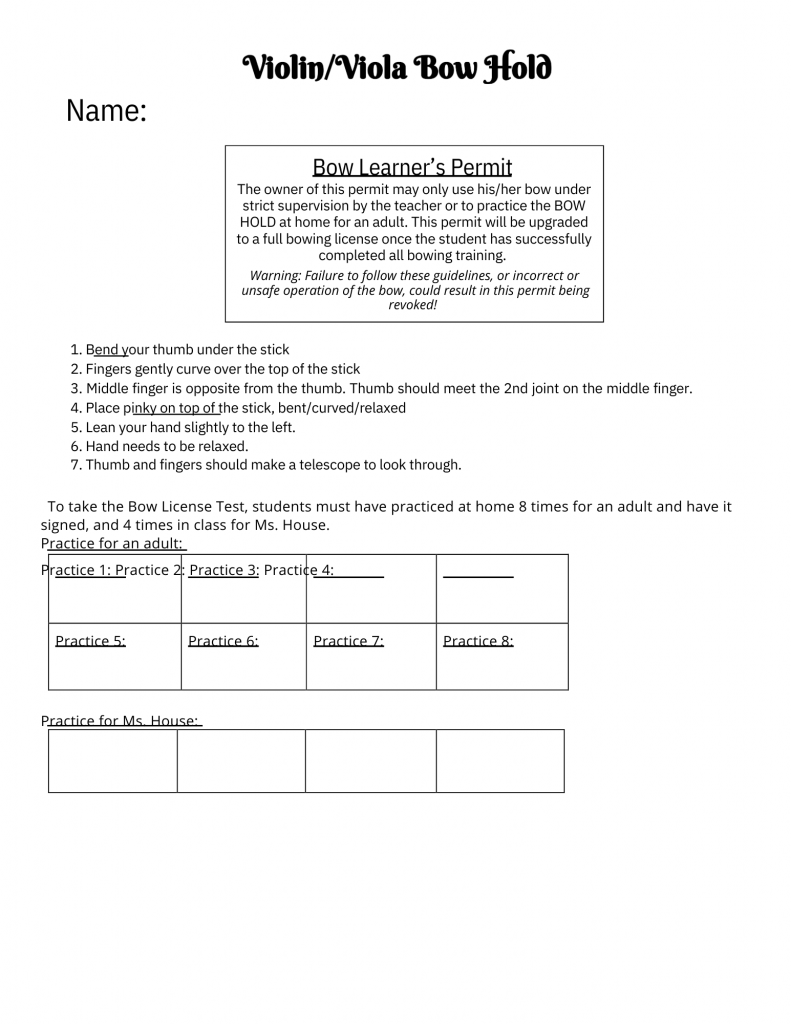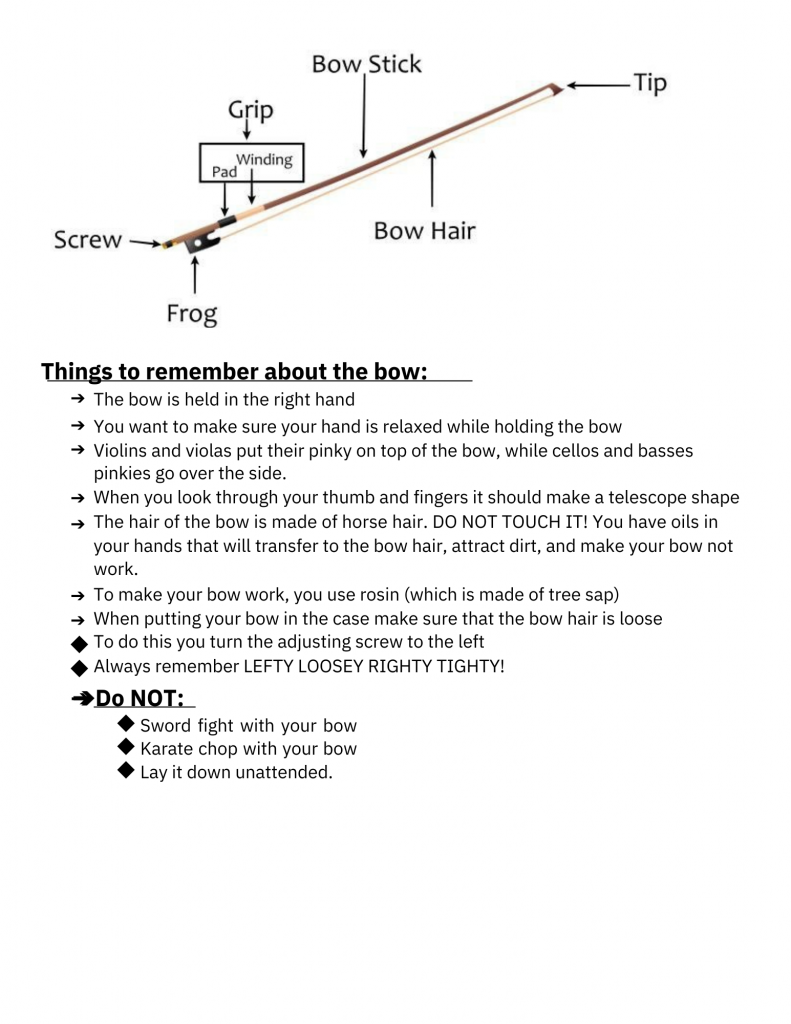by Kathy House, Andover Central Orchestra Program
Tone is vital to your group sounding amazing as they progress from day 1 of strings to the world beyond your classroom. When teaching, though, it can be easy to get lost in the minutia of other things—F-sharps, tuning, violin beards, and more—and forget about the importance of making sure you set up tone well. So, here are ten quick strategies to encourage great tone production in your orchestras.
Tone Building Strategy 1
Spend time—a month or more—developing your students’ bow holds. Start the cycle as soon as you can, but only work on it for 20% of your daily rehearsal time. There are so many great manipulatives you can make, like cutting the frogs off of old bows, using the traditional pencil method, or using a dowel rod marked with different dots. Pinterest or String Teacher online sources are your friend!
Tone Building Strategy 2
Build pinky houses or bow pockets to get your students to set their bow hands correctly, or make them pass off on bow permits to earn a bow license. Draw their awareness to what a correct bow hold feels like many times before their first sounds.
- Pinky House: see the YouTube video above
- Bow Pocket: wrap rubber band around frog and hook it around the adjusting screw
- Violin/Viola: put middle finger and index finger inside of the pocket
- Cello/Bass: put ring finger and pinky finger inside of the pocket




Tone Building Strategy 3
Expose your students to a variety of aural examples with everything from the olden Vivaldi to modern ThatViolaKid.
- In a non-technology filled classroom or with limited time…set up a Google Classroom or Microsoft Teams with your beginners and each week post a video that exposes them to a beautiful sound. In my situation, I let them grab a Chromebook and listen to the videos, while I test them on Thursdays.
- In a technology-filled classroom and with time…do a Fun Friday and show them a video each week. You can expose them to any genre!
Tone Building Strategy 4
Model a proper sound. As your students are playing pizzicato, play along with them arco. They need to hear it about a month before they can produce the same tone.
Tone Building Strategy 5
Don’t underestimate the power of bow exercises. Have students lead them, so you can go fix bow holds. Here are a few of my favorites:
- Wiggle the string without making a sound, then play
- Spider crawls to develop pinky strength
- Finger and thumb push-ups.
- Teach a scratchy tone with double stops and then back off their sound
- Spell your name with the adjusting screw
- Play a video from the Orchestra Teacher YouTube playlist. My favorite is Bow Warm-Ups 2.0. (I go help my kiddos while it plays.)
Tone Building Strategy 6
Bow tubing saves your ears and prevents students from learning a poor sound. The materials you need are rubber bands and enough cardboard tubes for each student in your class.
- Level 1: Have students practice in front of their body bowing while you are tuning. Tell them to extend their elbows as far as they can as they move.
- Level 2: Have students practice in front of their body (cello/bass) or on their shoulder (violin) while you are tuning. You can also have students practice in pairs, so they are checking how far their arms are extending.
- Level 3: Pass out rubber bands and have students secure the bow tube to their instrument. They can practice along with anything while you tune. Make sure they still extend their elbows.
- Level 4: Have them learn how to read bow direction while silently practicing.
Tone Building Strategy 7
Demonstrate poor tone in a fun game. Students love seeing you make mistakes and call you on not playing right. Make them use proper bow vocabulary to fix it, though. One of my favorite ways to practice this is with String Doctor, where students have to come up with 3 ailments (problems) that you have and 3 ways they will treat it (solutions).”
Tone Building Strategy 8
Don’t be afraid to pull out tiny bows. Have a student that struggles with pulling full bows…give them a tiny bow to practice with, and suddenly, they realize that they need to use more bow and bring that elbow up to bow!
Tone Building Strategy 9
Bring back bow tubes or pull out straws to teach a straight bow
- The straws go into the F-holes on the instrument, and students bow.
- I’ve found that for cellos/bass, band or elementary teachers can hook you up with extra drumsticks or rhythm sticks to use.
Tone Building Strategy 10
Teach students about bow lanes. There are five lanes on their bow highway. Have them warm-up with a scale and purposely glide into each lane to experiment with changing their tone.
- Lane 1= beside the bridge (sul ponticello)
- Lane 2 = loudest zone (line up with your F hole)
- Lane 3 = medium zone
- Lane 4 = medium soft zone
- Lane 5 = softest zone (sul tasto)
About the Author
Ms. House is immersed in the world of beginning strings this year, starting the Andover Central orchestra program. She has five classes of beginning orchestra students in fifth through twelfth grades and one intermediate class. When not teaching, you can find her performing in the Wichita community, reading, traveling the United States, or board gaming with friends. This is her tenth year teaching. Ms. House is a member of TODA, ASTA, NAfME, KASTA, and is the chair of the SCKMEA Honor Orchestra and KMEA Festival Committee Orchestra Representative. Ms. House’s groups are frequently complimented on their tone production and expression.














